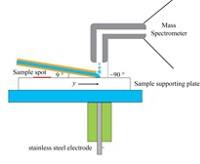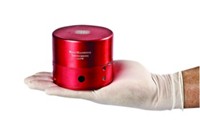Advertisement
Grab your lab coat. Let's get started
Welcome!
Welcome!
Create an account below to get 6 C&EN articles per month, receive newsletters and more - all free.
It seems this is your first time logging in online. Please enter the following information to continue.
As an ACS member you automatically get access to this site. All we need is few more details to create your reading experience.
Not you? Sign in with a different account.
Not you? Sign in with a different account.
ERROR 1
ERROR 1
ERROR 2
ERROR 2
ERROR 2
ERROR 2
ERROR 2
Password and Confirm password must match.
If you have an ACS member number, please enter it here so we can link this account to your membership. (optional)
ERROR 2
ACS values your privacy. By submitting your information, you are gaining access to C&EN and subscribing to our weekly newsletter. We use the information you provide to make your reading experience better, and we will never sell your data to third party members.
Analytical Chemistry
New Methods
Tricks To Address Resolution Challenges
by CELIA M. HENRY, C&EN WASHINGTON
November 15, 2004
| A version of this story appeared in
Volume 82, Issue 46

Jonathan V. Sweedler, a chemistry professor at the University of Illinois, Urbana-Champaign, is interested in cell-to-cell signaling. He uses mass spectrometric imaging--which turns data from matrix-assisted laser desorption ionization (MALDI) mass spectrometry into pictures--to look at molecules such as neuropeptides, hormones, and trophic factors in the brain. A potential drawback of MALDI mass spectrometric imaging, however, is its low spatial resolution, especially when lasers with large beams are used to image hydrophilic molecules, which easily migrate when a matrix is added.
Sweedler has a couple of tricks to deal with the resolution challenges of MALDI imaging. One approach he uses is "complete ablation." Each spot is repeatedly hit with the laser beam until the material remaining on the sample is no longer MALDI active.
Like many MALDI instruments, the spectrometer in Sweedler's lab has a nitrogen laser that forms a fairly large beam--"a hundred microns by a couple of hundred microns," Sweedler says. "It turns out that you can image just as effectively with that and still get 25-µm resolution." The way he achieves that resolution is by completely ablating a spot and then moving the laser beam only 25 µm. "If you're doing 25-µm steps, your effective probe size is 25 µm. You're using a big laser beam that effectively images only a small spot each time."
To validate the approach, Sweedler's team imaged peptides deposited on grids used in scanning electron microscopy. Even with a 200-µm laser spot moving at 25-µm increments, they could recover the grid size. "We're doing 10 times better than you would expect, given our probe size," Sweedler says.
In the other method, Sweedler places a tissue sample on top of an array of beads that are about the same size as the tissue thickness. For example, a 20-µm-thick brain slice requires 20-µm-diameter beads. The beads are anchored on a wax film. When the film is stretched, the beads are pulled apart, and the sample breaks into many tiny pieces about the size of a single cell.
"You can do whatever you need to do to individual beads that are well separated from each other. You can get high-quality mass spectra from each bead," Sweedler says. "Then the locations of the beads can be reregistered against the original location on the tissue." For registration, a small fraction of the beads can be fluorescently tagged, and images are taken before and after stretching the array.
"This is a hybrid approach between single-cell mass spectrometry and imaging," Sweedler says. "It's basically taking a brain slice and saying, 'Can I break it into a million separate pieces, analyze those, and then reassemble the image?' Is it imaging? I'm not sure, but you get x–y [spatial] information."
MORE ON THIS STORY
DRAWING WITH MASS SPEC
NEW METHODS




Join the conversation
Contact the reporter
Submit a Letter to the Editor for publication
Engage with us on Twitter